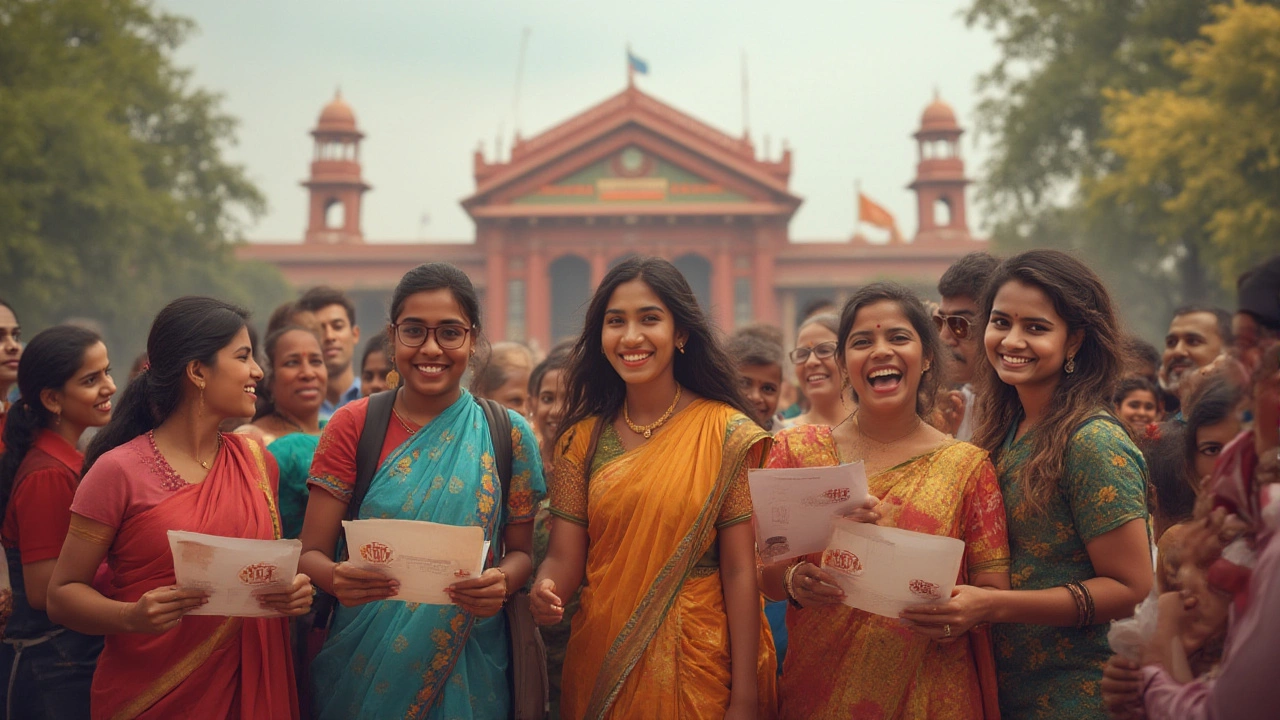Think you know how many seats the IITs in India have? Prepare for a surprise—this number doesn't just change every year, it also hides behind quotas, categories, and special allocations that few students expect before they get their rank. Every year, almost two million students eye the handful of spots across all IITs, making it one of the most competitive showdowns on the planet—not just in India. Yet, most people hear random figures and rumors instead of cold, hard data. Here, you're getting the real deal: the latest numbers for total and category-wise IIT seats, how these seats are split, and the inside tips that your coaching classes never bother to spell out.
How Many Total IIT Seats Are There Across India?
Latest figures from the Joint Seat Allocation Authority (JoSAA) say there are over 18,500 seats in all IITs put together for the 2025-26 admission year. This is a jump from earlier years—back in 2022, the total IIT seats hovered around 16,232, and in 2024, it was about 17,385. The yearly increase is mostly because new branches crop up, old ones expand, and a few more reserved seats are added. As of July 2025, there are 23 IITs running in India, each with its own strengths, favorite branches, and seat matrix. If you ever thought every IIT offers the same number of seats, that's a myth. IIT Kharagpur leads with close to 2,200 seats, followed closely by IITs Bombay, Delhi, Madras, and Kanpur, each packing in between 1,100 to 1,800 seats. The newer IITs, like those at Palakkad, Dharwad, and Bhilai, have fewer—sometimes under 300.
Most seats go into the flagship B.Tech. programs, and some into dual degrees, integrated M.Tech., and newer inter-disciplinary branches like Data Science. And yes, these numbers exclude supernumerary seats (for foreign nationals and some other categories), which get added on top of the regular count. Each institute keeps a chunk for special categories—like women supernumerary seats, seats for persons with disabilities, and sometimes even for overseas students. So, if all you knew was the grand total, you’d be missing the twists and turns hidden in the matrix.
Breakdown of IIT Seats by Categories and Quotas
Here’s where things get interesting—and confusing. India’s reservation system for IITs looks like a patchwork quilt, with slices for different categories. Out of the total seats, 15% are set aside for Scheduled Castes (SC), 7.5% for Scheduled Tribes (ST), and 27% for Other Backward Classes (OBC, non-creamy layer). Another 10% is reserved for the Economically Weaker Sections (EWS). Add to that a mandatory 5% in each category set aside for Persons with Disabilities (PwD). Now, these percentages don’t add up neatly because overlaps happen, and some categories go unfilled in a given year. Next comes the supernumerary quotas—these are extra slots, so they don't eat into the regular seats. In 2023 and 2024, every IIT added 20% supernumerary seats for women, aiming for at least 20% female representation.
Every branch at an IIT has its own seat matrix, and these breakups are updated every year by JoSAA before the first round of counseling. So, if you’re an OBC-NCL candidate, IIT Bombay Computer Science might offer 15 to 18 seats, while the same branch at IIT Bhubaneswar offers just three. A tip: always check the official JoSAA seat matrix after results, because the math changes with every batch. If you qualify as PwD, know that your counseling and allocation works through an entirely parallel process, often leading to additional rounds or spot admissions. The moral: don’t assume the number you hear in coaching class matches your possible intake.

How IIT Seats Are Filled: Behind the Scenes at JoSAA and Seat Allotment
You may wonder, "Why does my rank sometimes get me nothing, while a friend with a worse score lands a seat?" It’s not favoritism—it’s the seat allocation algorithm in action. JoSAA, the body responsible for All-India IIT seat allocation, uses a highly automated process running over several rounds (usually six, sometimes more in case of seat vacancies). All eligible candidates—those who cleared JEE Advanced—must register and fill out their choice preferences for branches and IITs. The most important thing: your *JEE Advanced* All India Rank (AIR) is the gold standard, not your board percentage or JEE Main rank. Every year, applicants lock in their choices, and the algorithm starts distributing seats branch-by-branch, based on AIR, categories, and available seats, moving down the ranks with every round.
Tip: Some branches at lesser-known IITs do see vacant seats even after six rounds, especially in niche courses like Metallurgy or Engineering Physics. After JoSAA’s rounds end, some IITs may conduct internal “spot rounds” or “vacant seat” counseling for unfilled slots. Unsure if you’re getting in? Watch the opening and closing Ranks for your desired branch, which JoSAA publishes after every round—they are the trend maps you never got in high school. Another behind-the-scenes secret: dual or interdisciplinary branches may go much lower on the rank list, so someone who fought for CSE in Bombay and missed by 100 ranks might grab Data Science in Jodhpur easily.
Tips to Improve Your Chances: The Art of Preference Filling
Think seat counts are all about luck? There’s actually a neat science to filling out your preferences—often more important than your raw rank. The biggest reason students miss out on a seat is not a bad rank, but poor preference listing. Many put only the “top dream” IITs and ignore those they have a real shot at. Here’s what successful applicants do: first, analyze the previous year’s cut-offs and see where your rank comfortably fits, not just scrapes in. Next, list every possible branch and campus you would genuinely attend, putting realistic options above “reach” campuses you know are out of range.
Don’t underestimate newer IITs—they build their reputations quickly. IIT Hyderabad, for example, barely registered ten years ago—now it opens doors globally, especially in Computer Science and Design. Another clever move: if you’re eligible for reserved categories or supernumerary seats (like women’s quotas), always opt-in for those boxes. They don’t disadvantage you in General competition, but give an extra shot at reserved seats. Lastly, don’t skip the opportunity to participate in spot rounds or internal rounds at less crowded IITs, where you could find unfilled seats in decent branches. Remember, getting into an IIT is a marathon, not a sprint. The smarter you strategize, the better your odds in this crowded race.

Interesting Facts About IIT Seats and Admission Trends in 2025
Some facts about IIT admissions might just surprise you. In 2025, for the first time, female enrollment at IITs crossed 21%, thanks to sustained efforts to supercharge gender representation. Another milestone: IIT Delhi introduced B.Tech. programs in Artificial Intelligence for the first time this year, adding nearly 80 new seats just for that branch—with closing ranks nearly matching classic streams like Electrical. Also, the newer IITs in Jammu, Goa, and Bhilai increased their intake by almost one-third. This means some states with low IIT presence earlier are quickly catching up.
One tricky move that stumps many: your branch change dream after first year isn't as easy as it sounds—demand for CSE and ECE is sky-high, but only a handful get to switch, so don't bet your whole admission plan on that. Another nugget: foreign nationals can now apply for a few seats through the DASA route, and those seats aren’t subtracted from the domestic pool. And here’s a stat no coaching ad flaunts—almost 6% of all IIT seats remained vacant in 2023 and 2024 even after multiple counseling rounds, mostly in lesser-known branches. That’s a lot of opportunity if you’re open to flexible choices.
So, how many IIT seats are there in India? This year, the magic number is roughly 18,500, with every single seat mapping to a face, an ambition—and, maybe, to you. It’s a battlefield out there, but the seat matrix is your game plan. Learn it well, use data smartly, and play your chances. Want that IIT seat? You’re not just up against competition, but also the cleverness of your own choices.











